
Galería El Museo will present two exhibitions during ArtBo Fin de Semana: a dialogue between Carlos Rojas, Eduardo Ramírez Villamizar, and Manuel Hernández, and "Efemérides" by Juan Osorno. This dialogue, which will occupy our two main rooms, proposes a conversation among three of the most important artists in Colombia during the 20th century. Each, from their unique perspective, explored abstraction as a search for the spiritual in art, whether through geometry, color, or form. Their works defined how abstraction would be understood in national modern art.
In the project room, artist Juan Osorno will exhibit a new series of drawings in which he confronts historical images with memes. Through humor, he questions the idea of how we represent ourselves through images and how we perceive the world.
Galeria El Museo opened in 1987 in Bogotá, Colombia as a project aimed to develop and promote the Colombian art market locally and internationally, through representing artists, collaboration’s with other galleries, museum exhibitions and participation in international art fairs. Galeria El Museo’s represented artists are periodically selected based on their contributions to the development of the visual arts. In 2001 Galeria El Museo opened Galeria Fernando Pradilla in Madrid to build a bridge between the Latin American, Spanish and European art scenes. Galeria El Museo has represented throughout its history major international artist such as Fernando Botero, Alejandro Obregón, Débora Arango, Luis Caballero, Carlos Rojas, Nadin Ospina and many others.

The diversity of Carlos Rojas' artistic proposals prevents us from framing him in a single notion of style. Despite the chronological categorizations assigned to the creative process of this artist, which associate his work with the conformation of series limited to specific decades, it could be considered that although it is true that the works that integrate various techniques and references appear at specific moments, the development of these occurred simultaneously with the initiation of other approaches. This consideration makes it possible to interpret his work as a continuous project that is based on a particular attitude towards reality.
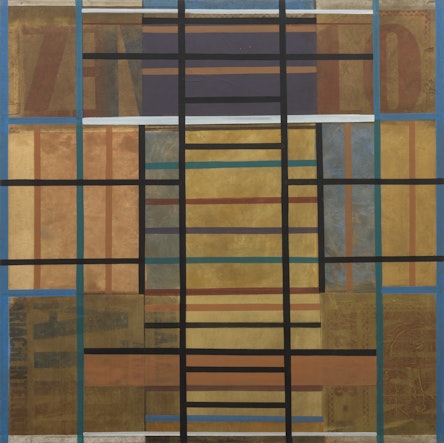
The diversity of Carlos Rojas' artistic proposals prevents us from framing him in a single notion of style. Despite the chronological categorizations assigned to the creative process of this artist, which associate his work with the conformation of series limited to specific decades, it could be considered that although it is true that the works that integrate various techniques and references appear at specific moments, the development of these occurred simultaneously with the initiation of other approaches. This consideration makes it possible to interpret his work as a continuous project that is based on a particular attitude towards reality.
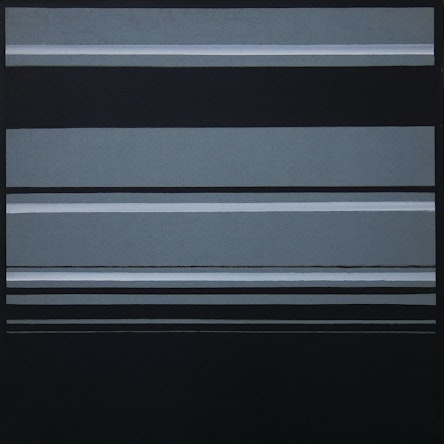
The diversity of Carlos Rojas' artistic proposals prevents us from framing him in a single notion of style. Despite the chronological categorizations assigned to the creative process of this artist, which associate his work with the conformation of series limited to specific decades, it could be considered that although it is true that the works that integrate various techniques and references appear at specific moments, the development of these occurred simultaneously with the initiation of other approaches. This consideration makes it possible to interpret his work as a continuous project that is based on a particular attitude towards reality.

Eduardo Ramírez Villamizar is considered one of the pioneers of geometric abstraction in Colombia. From the beginning, his work was characterized by two-dimensionality and the use of line, drawing inspiration from natural forms and his interest in pre-Columbian art. Having lived in New York and Paris, he was influenced by contemporary avant-garde movements, definitively incorporating abstraction into his work. From then on, line, simplicity, and order became fundamental characteristics that distinguished his work throughout his career. Eduardo Ramírez Villamizar participated in various national and international exhibitions. He took part and won the first prize at the XII National Salon of Colombian Artists (1959), the Unique Sculpture Prize in the XIV (1962), XVI (1964), and XVII (1966) editions of the Salon. He also participated in the VI (1962) and IX (1969) São Paulo Biennials, as well as the XXXVII Venice Biennale (1976). His work is held in important institutional and private collections.
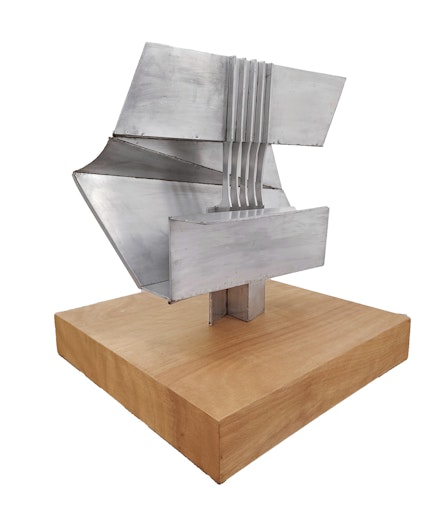
Eduardo Ramírez Villamizar is considered one of the pioneers of geometric abstraction in Colombia. From the beginning, his work was characterized by two-dimensionality and the use of line, drawing inspiration from natural forms and his interest in pre-Columbian art. Having lived in New York and Paris, he was influenced by contemporary avant-garde movements, definitively incorporating abstraction into his work. From then on, line, simplicity, and order became fundamental characteristics that distinguished his work throughout his career. Eduardo Ramírez Villamizar participated in various national and international exhibitions. He took part and won the first prize at the XII National Salon of Colombian Artists (1959), the Unique Sculpture Prize in the XIV (1962), XVI (1964), and XVII (1966) editions of the Salon. He also participated in the VI (1962) and IX (1969) São Paulo Biennials, as well as the XXXVII Venice Biennale (1976). His work is held in important institutional and private collections.
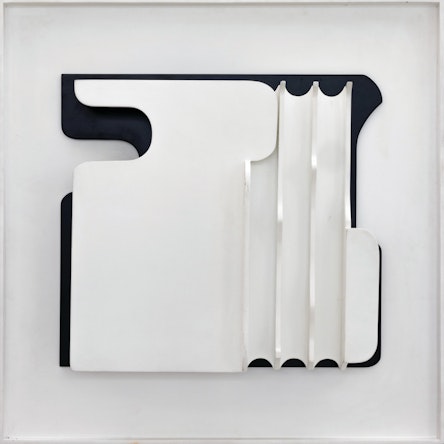
Eduardo Ramírez Villamizar is considered one of the pioneers of geometric abstraction in Colombia. From the beginning, his work was characterized by two-dimensionality and the use of line, drawing inspiration from natural forms and his interest in pre-Columbian art. Having lived in New York and Paris, he was influenced by contemporary avant-garde movements, definitively incorporating abstraction into his work. From then on, line, simplicity, and order became fundamental characteristics that distinguished his work throughout his career. Eduardo Ramírez Villamizar participated in various national and international exhibitions. He took part and won the first prize at the XII National Salon of Colombian Artists (1959), the Unique Sculpture Prize in the XIV (1962), XVI (1964), and XVII (1966) editions of the Salon. He also participated in the VI (1962) and IX (1969) São Paulo Biennials, as well as the XXXVII Venice Biennale (1976). His work is held in important institutional and private collections.
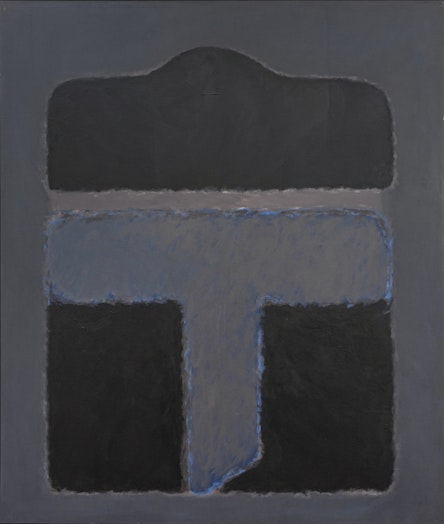
Like the vast majority of abstract artists, Manuel Hernández began with academic figuration influenced by the orientation towards Mexican muralism with its realistic social representation. From the 1960s onward, his work took a turn towards abstraction, seeking spirituality in art through forms. His language was solidified through a pictorial inquiry in which color played a definitive role, and from the seventies onwards, he delved into the sign that characterizes his work, a sign he developed over 40 years. In Hernández's work, the form is crucial as illusion, as a creative result, as a means through which inner and outer energies are expressed, and as tributes to an image with no real reference. One of the artist's main concerns within the field of abstraction was the vibration and the possibility of a "static in internal motion" form, as he himself defined it. The irradiation from the edges implies a broad reflection on light, the materiality of objects, and the nature of colors, placing him in the tropics, where a high level of simultaneous contrasts persists. Hernández's language is restrained, austere, decisive, and self-sufficient without the need for descriptions. From his student years, first in Bogotá and then in Santiago de Chile, Hernández embarked on the quest for a unique expression, a singular language, and a personal alphabet that condensed and explained his painting on its own terms.

Like the vast majority of abstract artists, Manuel Hernández began with academic figuration influenced by the orientation towards Mexican muralism with its realistic social representation. From the 1960s onward, his work took a turn towards abstraction, seeking spirituality in art through forms. His language was solidified through a pictorial inquiry in which color played a definitive role, and from the seventies onwards, he delved into the sign that characterizes his work, a sign he developed over 40 years. In Hernández's work, the form is crucial as illusion, as a creative result, as a means through which inner and outer energies are expressed, and as tributes to an image with no real reference. One of the artist's main concerns within the field of abstraction was the vibration and the possibility of a "static in internal motion" form, as he himself defined it. The irradiation from the edges implies a broad reflection on light, the materiality of objects, and the nature of colors, placing him in the tropics, where a high level of simultaneous contrasts persists. Hernández's language is restrained, austere, decisive, and self-sufficient without the need for descriptions. From his student years, first in Bogotá and then in Santiago de Chile, Hernández embarked on the quest for a unique expression, a singular language, and a personal alphabet that condensed and explained his painting on its own terms.
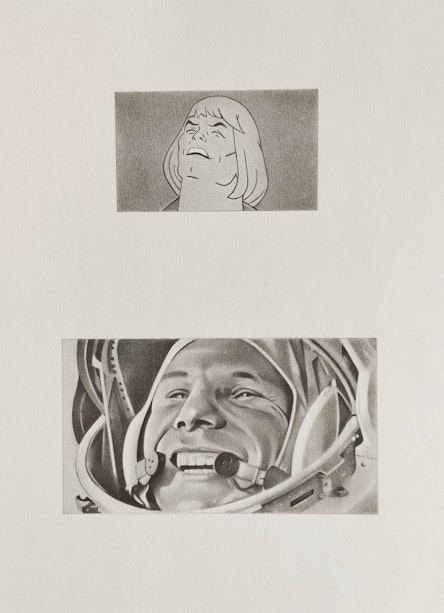
His work is inspired by the history of scientific and cultural development in the world. He attempts to view these moments with a touch of humor and exaggeration, often appealing to the curiosities and difficulties that have arisen in the quest for self-improvement as human beings. The development of medicine, space travel, or scientific progress are just some of the themes present in his work, and drawing is the ideal medium to turn them into unique stories that sometimes seem like they are taken from science fiction tales. However, they are only a reflection of our constant drive to improve as a society.
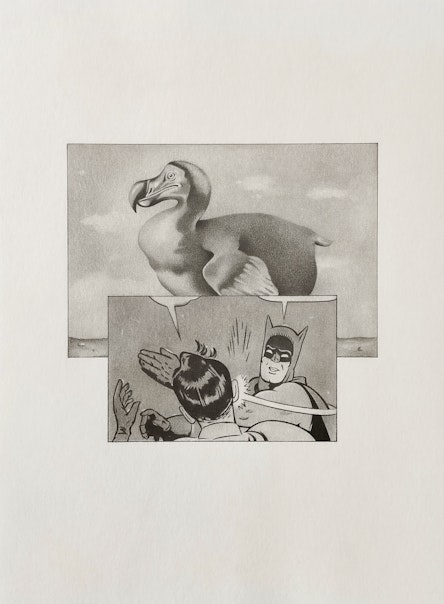
His work is inspired by the history of scientific and cultural development in the world. He attempts to view these moments with a touch of humor and exaggeration, often appealing to the curiosities and difficulties that have arisen in the quest for self-improvement as human beings. The development of medicine, space travel, or scientific progress are just some of the themes present in his work, and drawing is the ideal medium to turn them into unique stories that sometimes seem like they are taken from science fiction tales. However, they are only a reflection of our constant drive to improve as a society.